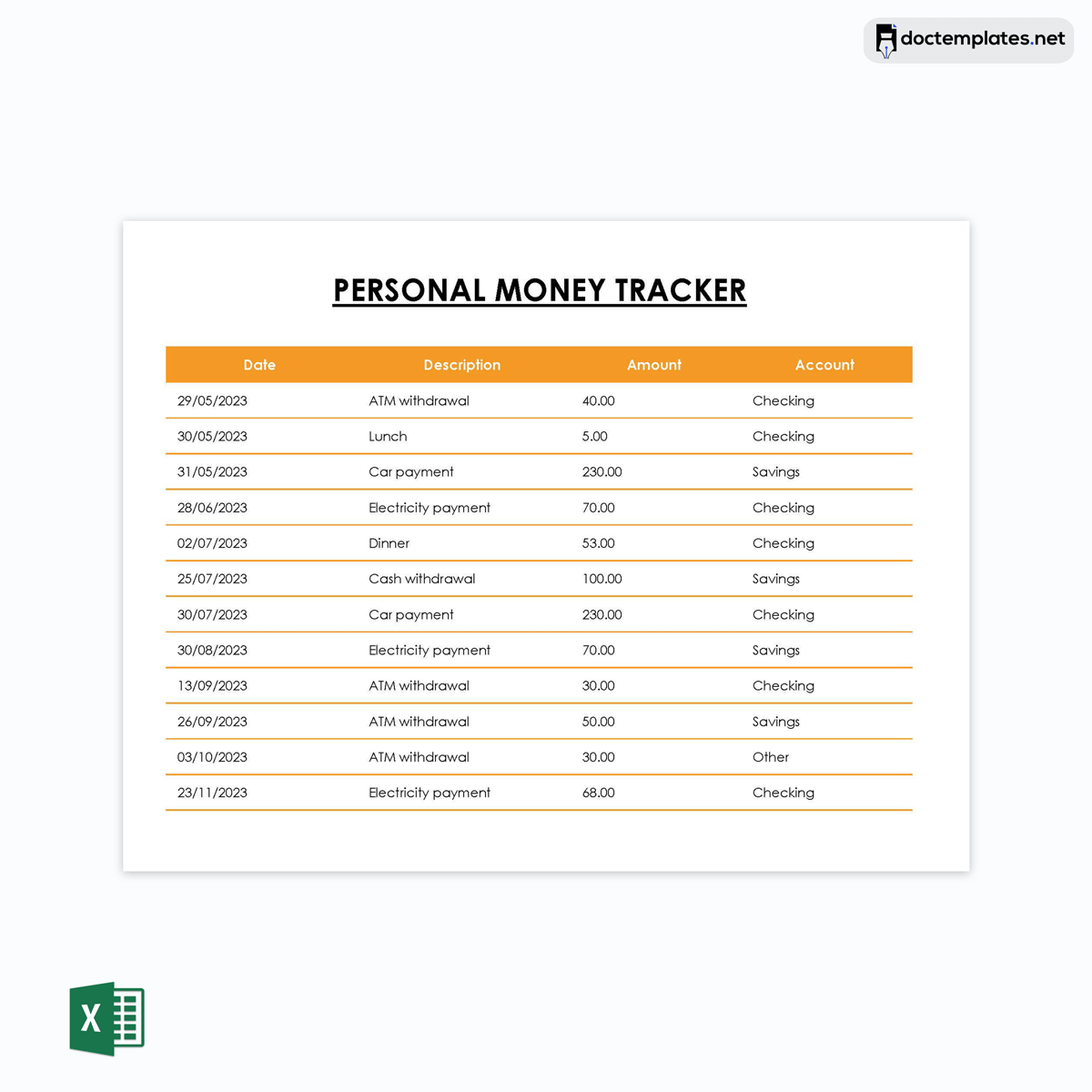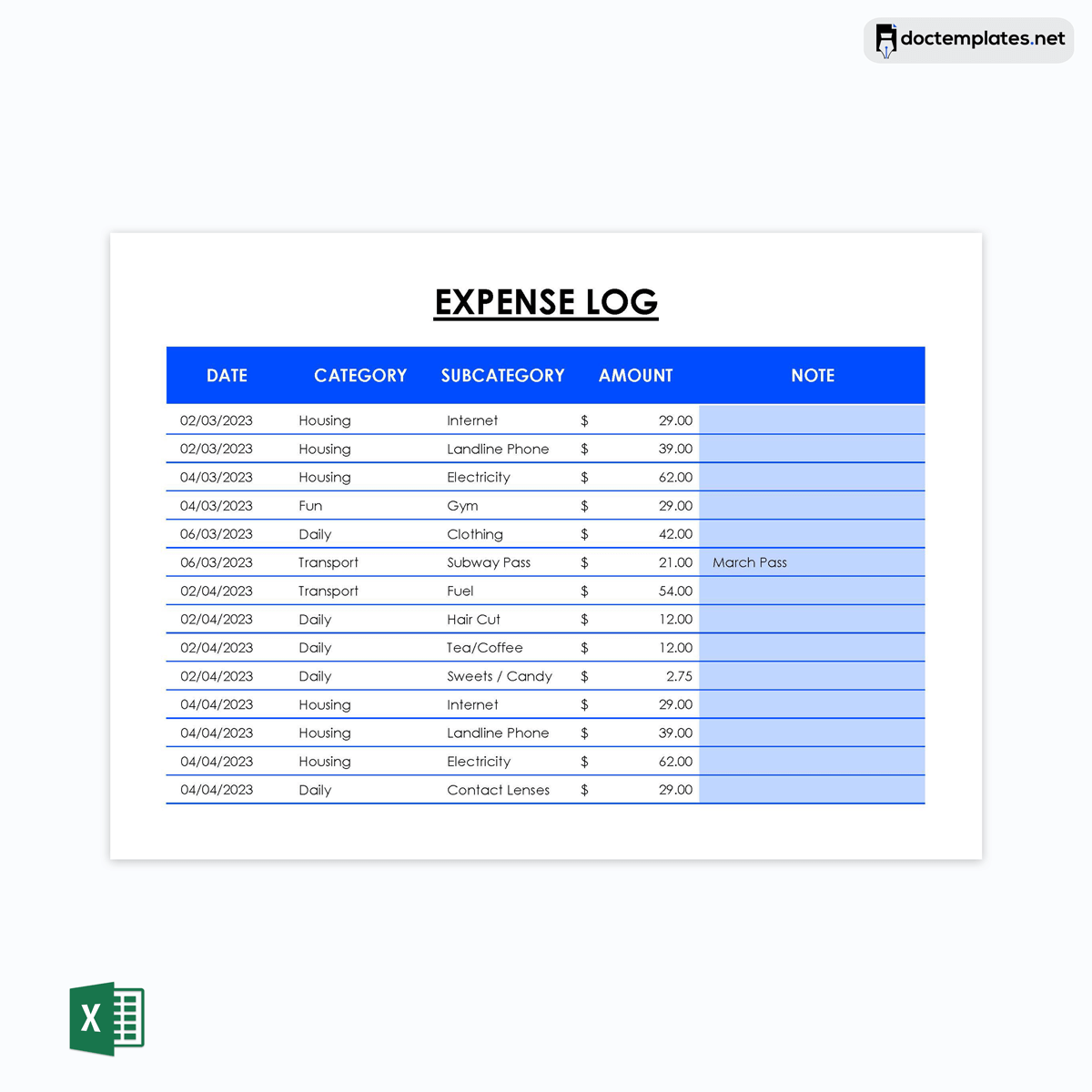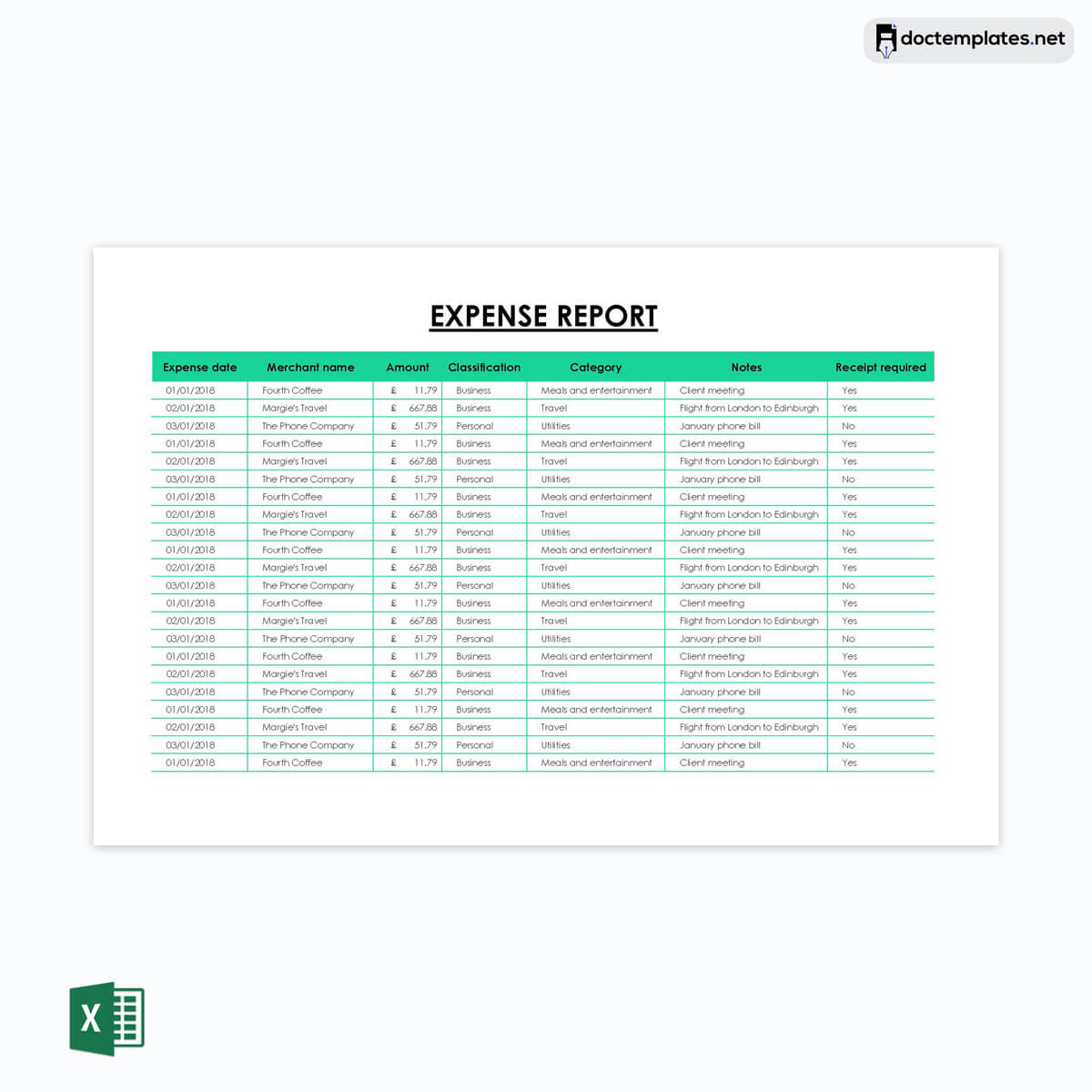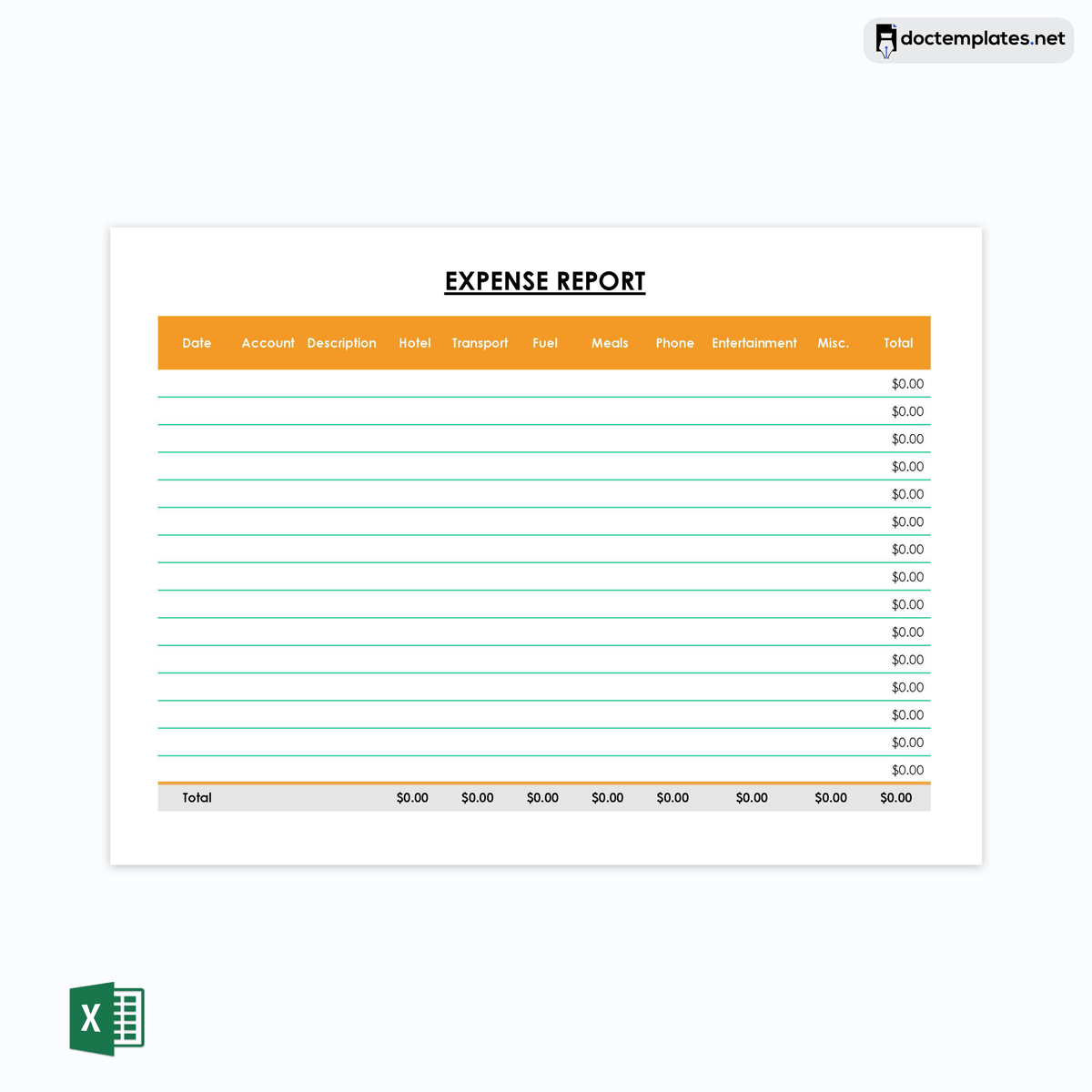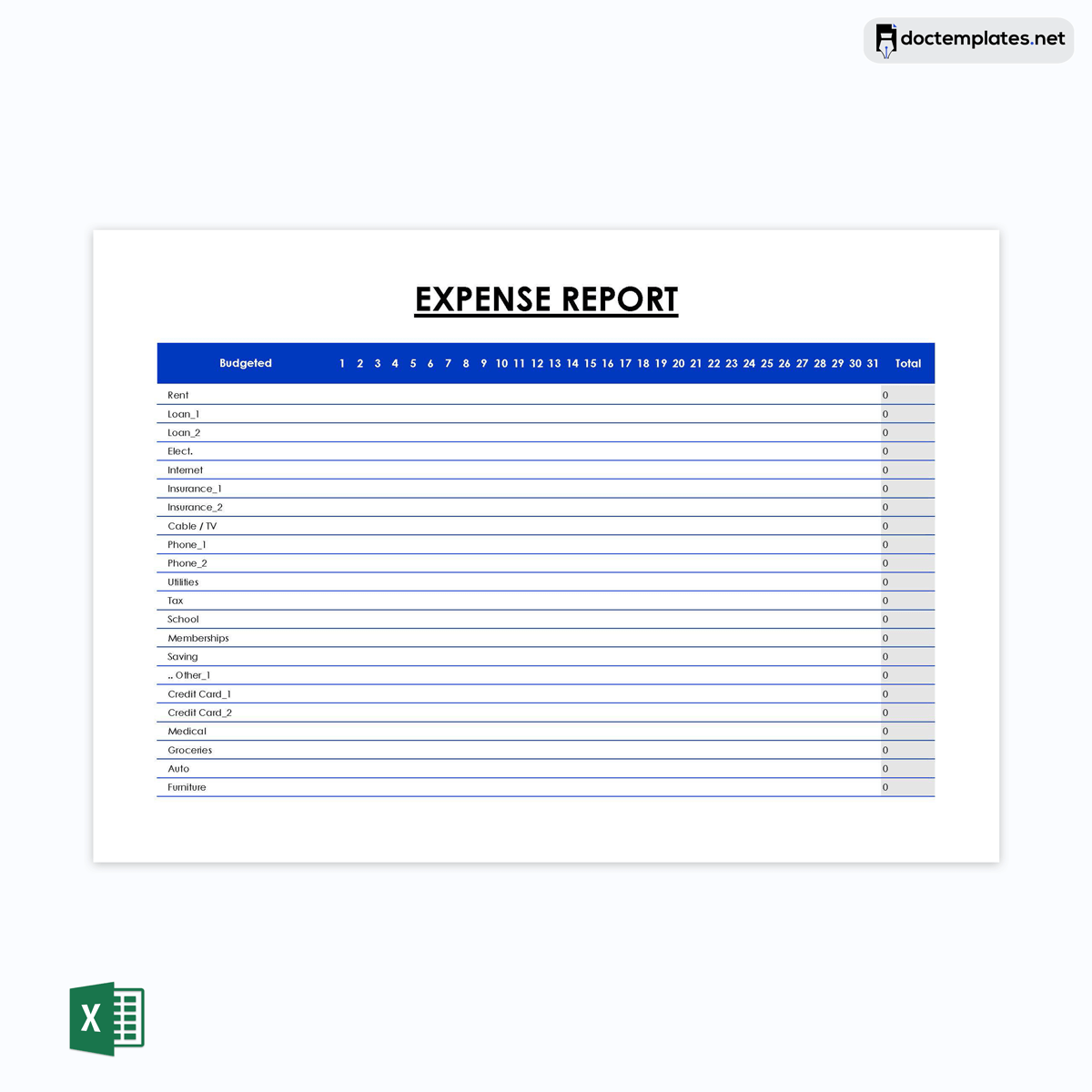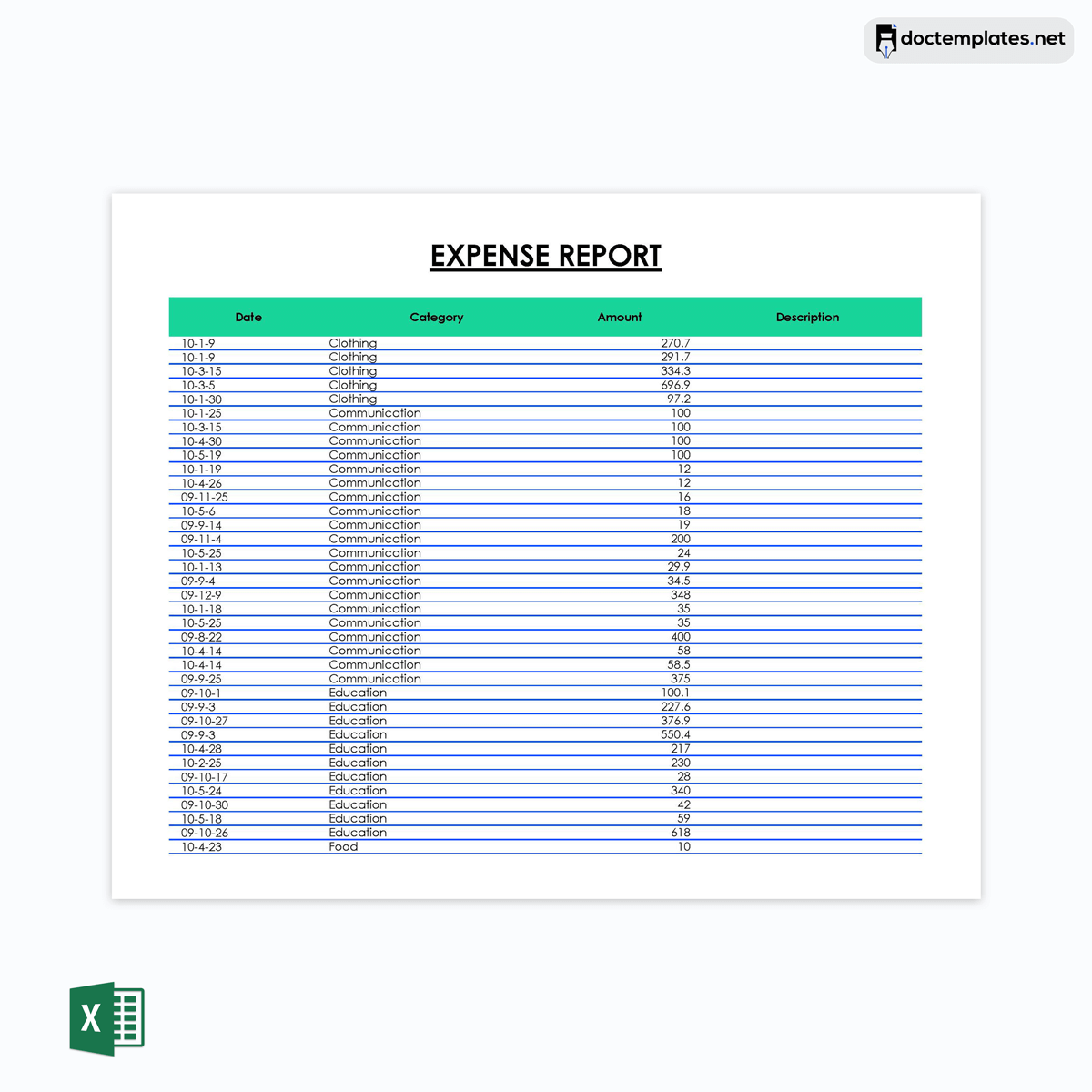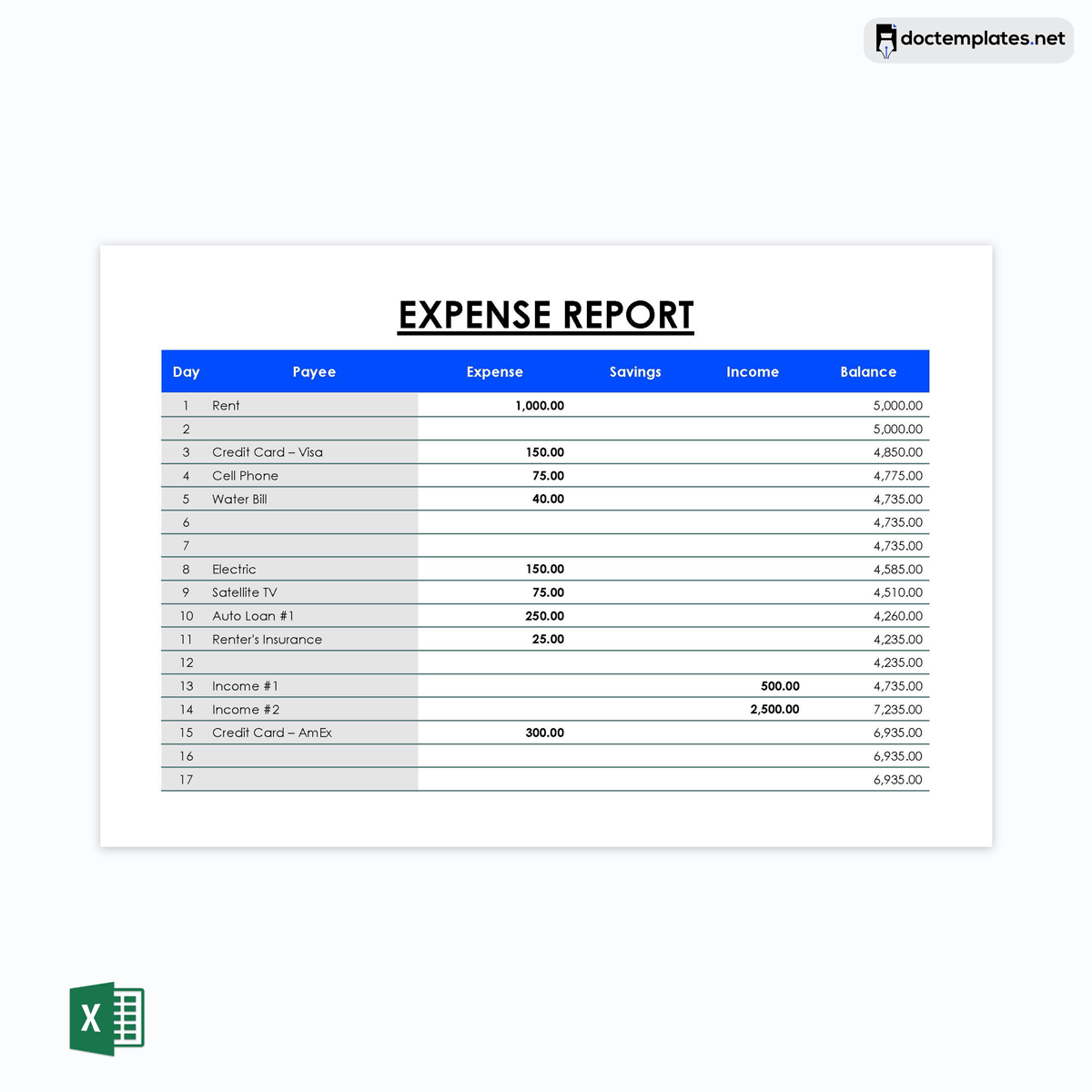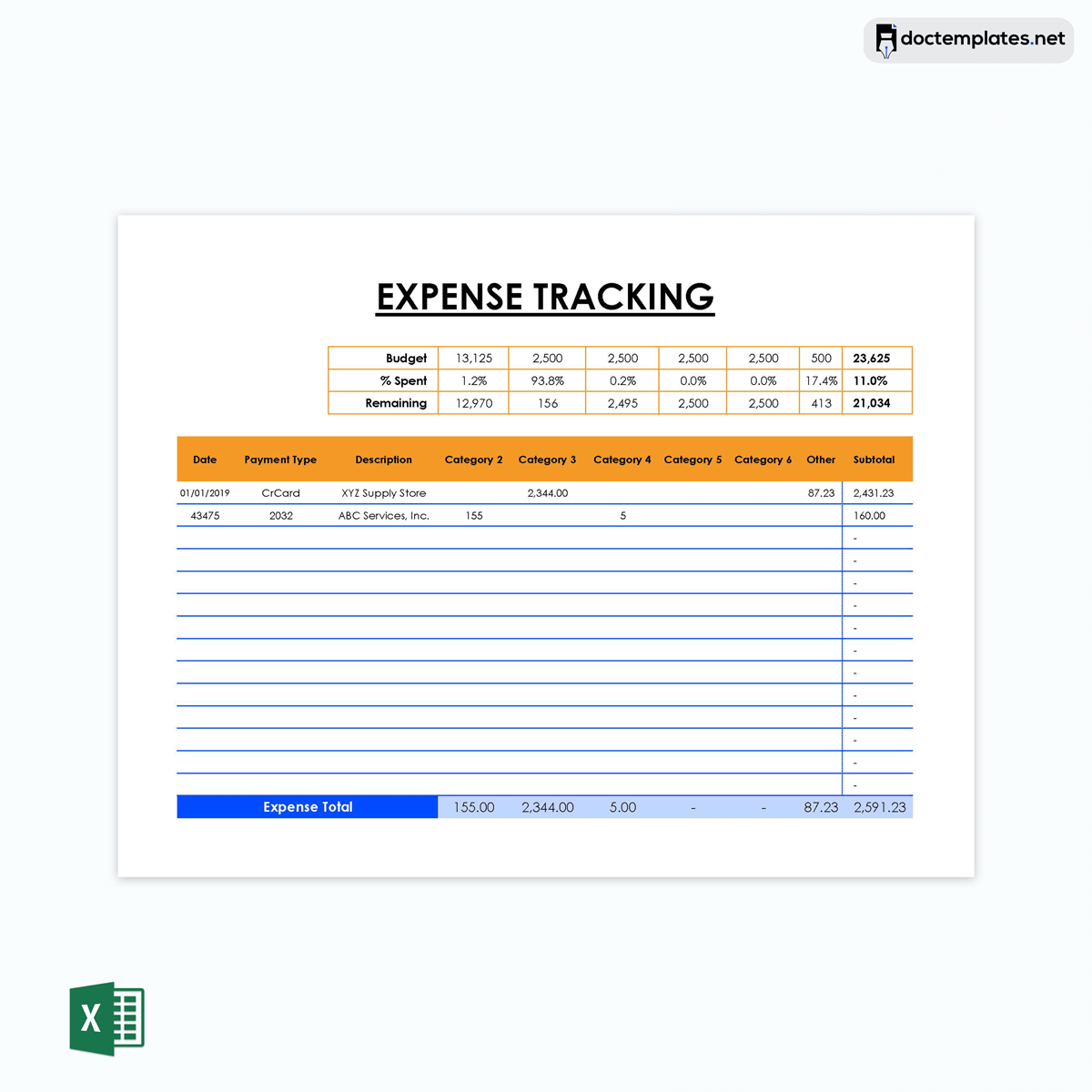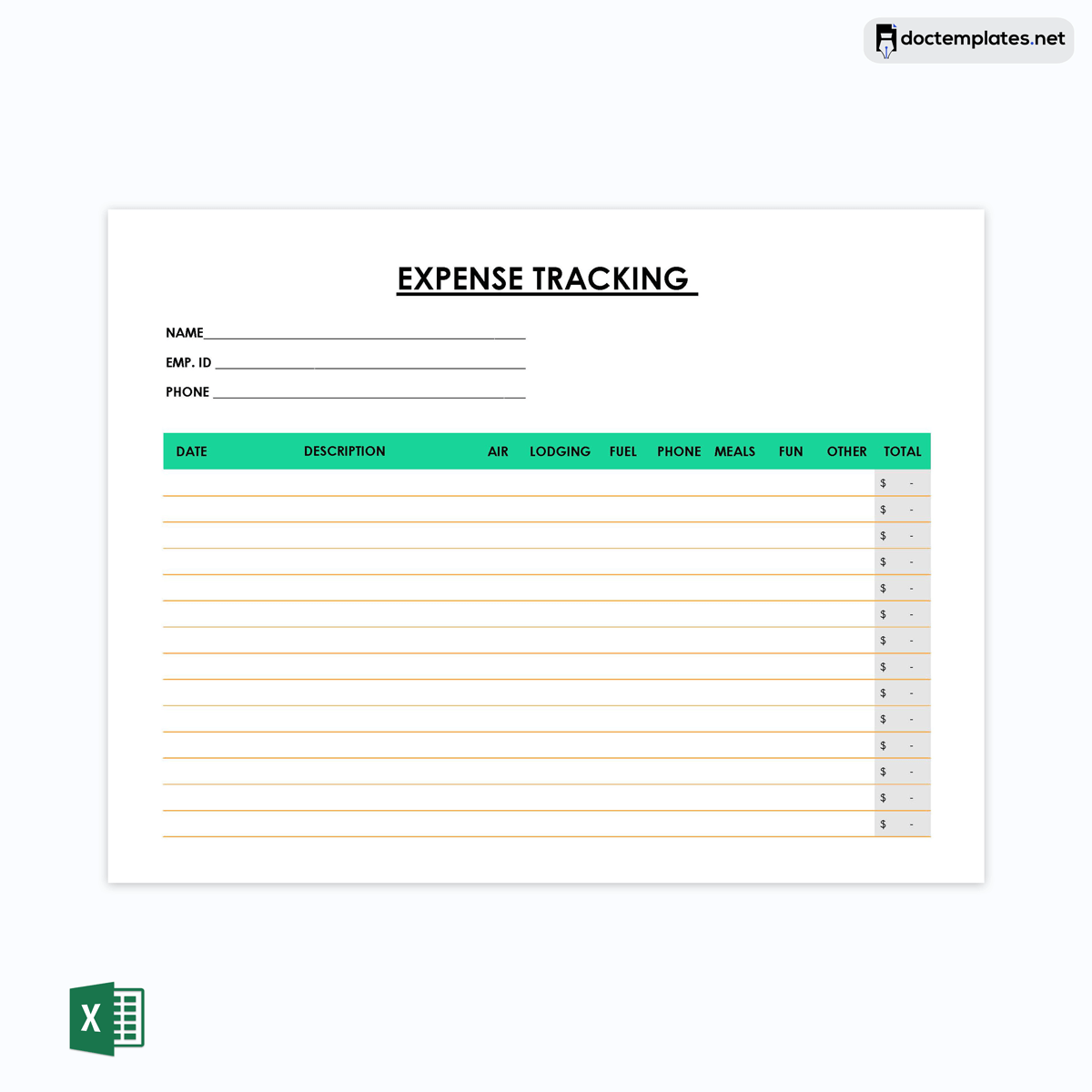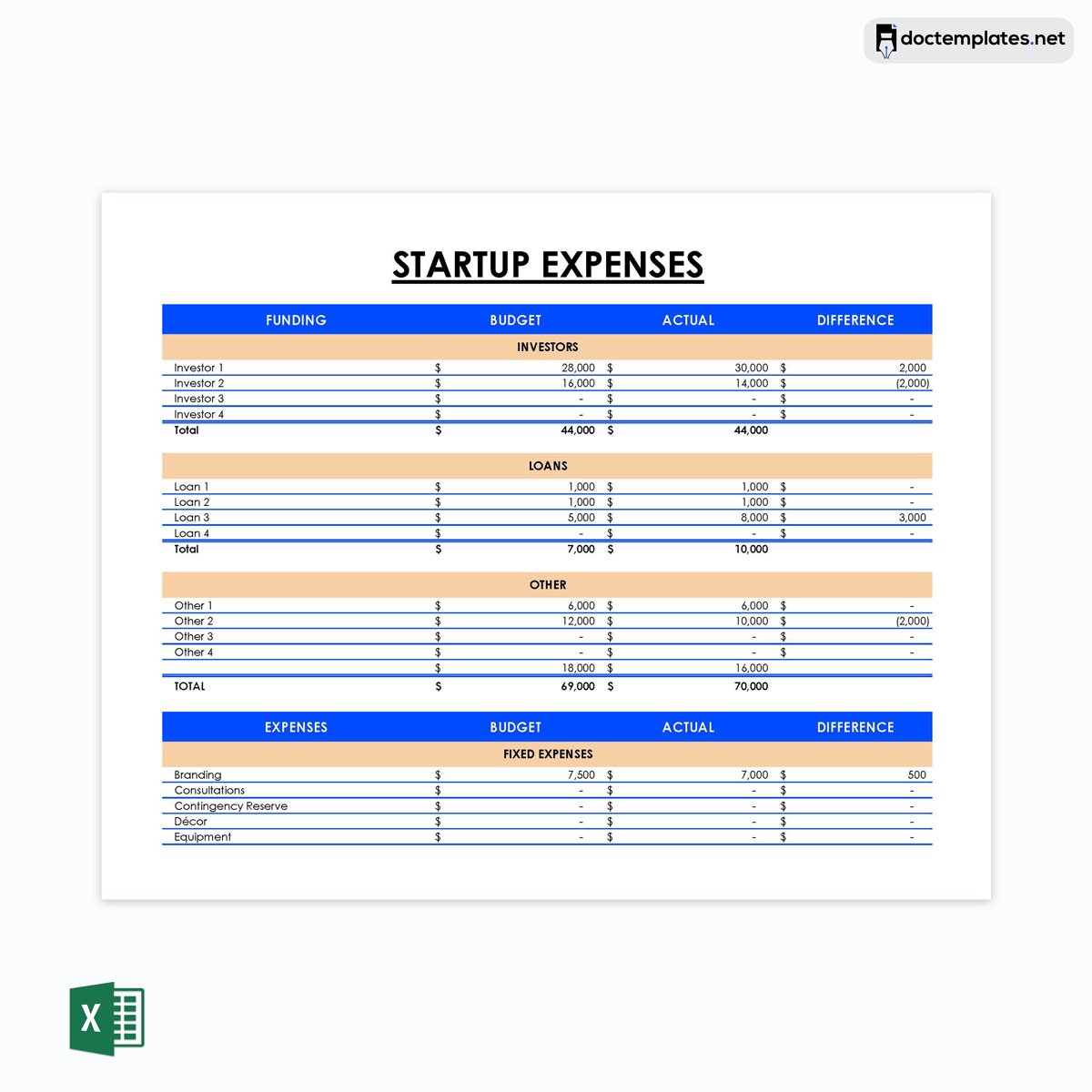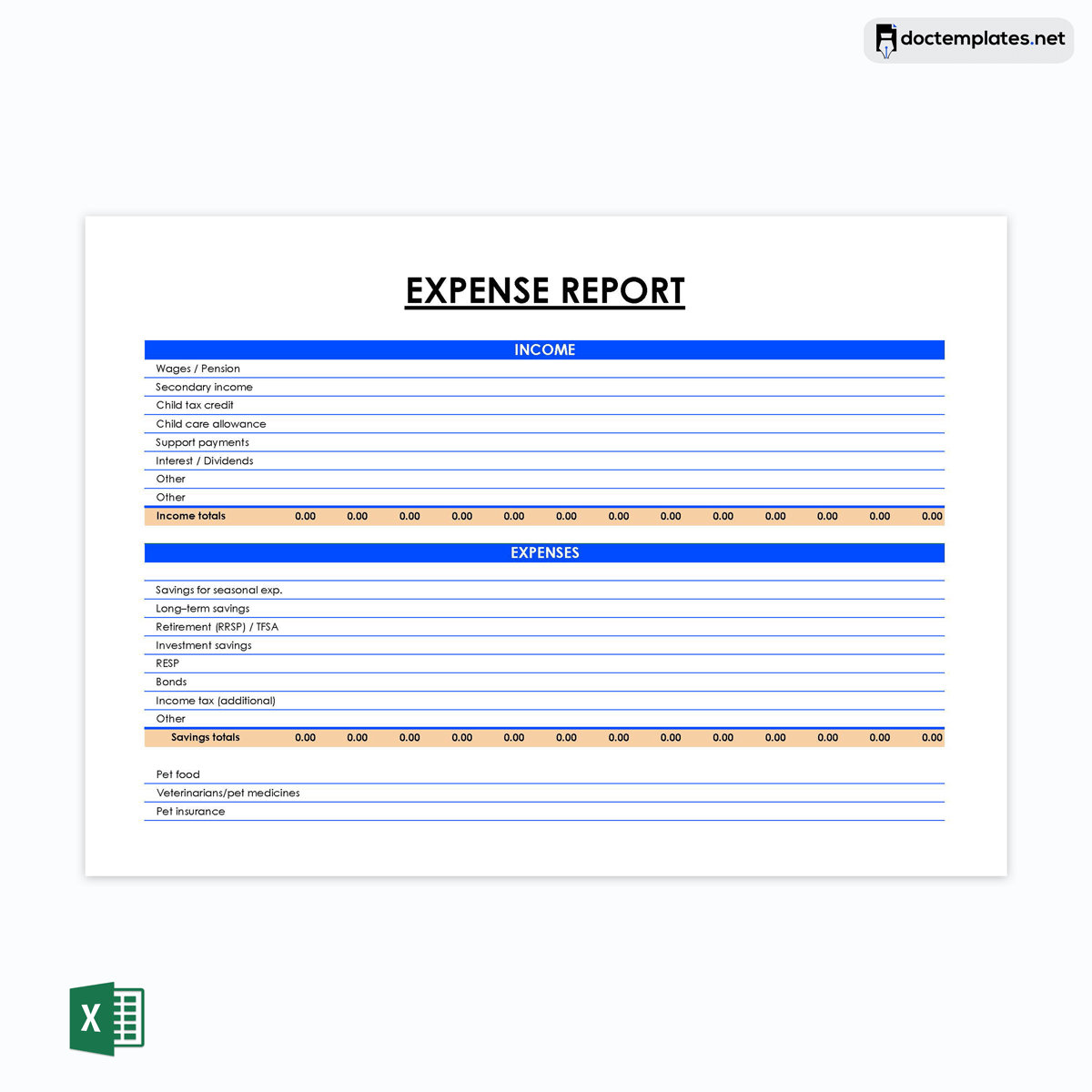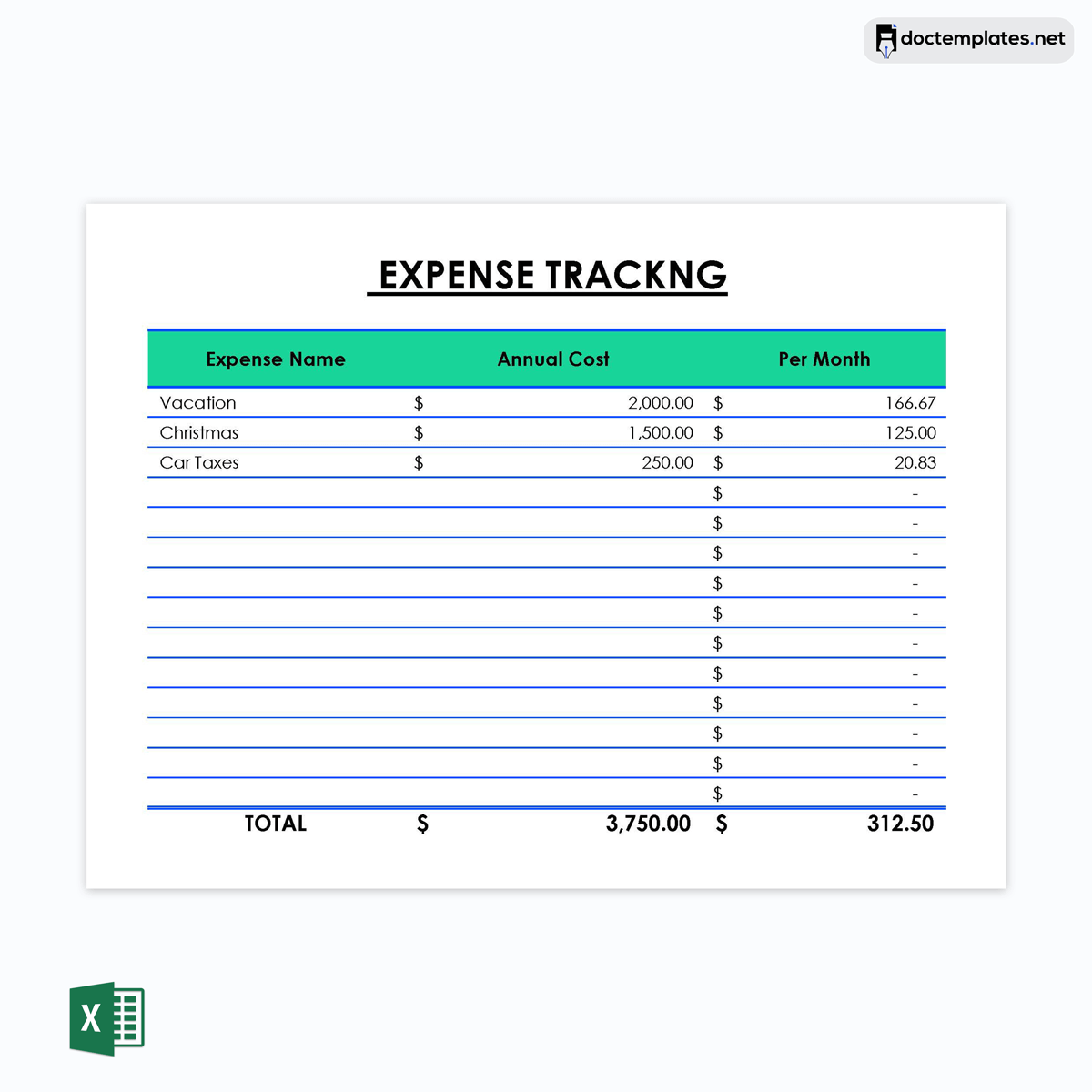Tracking expenses may seem like an overwhelming job, particularly for those who live on paychecks or are unfamiliar with the expense-tracking process. However, it is essential to have up-to-date knowledge of your expenses to avoid money leakages resulting from mismanagement.
There are many ways to track expenses. Some maintain paper journals to record expenses, while others use spreadsheets or dedicated expense tracking software. A reasonable expense tracking spreadsheet is the most efficient and easiest way to track expenses. Generally, there are many expense tracking spreadsheets available from paid services or free downloadable spreadsheets; but the most popular one is a free Microsoft Excel Spreadsheet.
A reasonable expense tracking spreadsheet should be easy to use and user-friendly. With the help of one, you can easily record expenses and monitor your cash flow for the month. In addition, it is an excellent tool for budgeting and saving money because you can identify unnecessary expenditures at a glance and cut or modify them based on your needs.
With an expense tracking spreadsheet, all information relating to your expenses is collected and organized in one place, meaning you can refer to it anytime the need arises without wasting too much time. Practical expense tracking spreadsheets should also allow you to seamlessly integrate them with other spreadsheets or software for financial forecasts, budgets, cash flow planning, etc. For personal or business use, expense tracking spreadsheets are tools to organize and simplify the expense tracking process.
Expense Tracking Spreadsheets
An expense tracking spreadsheet is a worksheet that is used to keep track of the expenses that are incurred within a specified time. The spreadsheet includes designated columns for recording your expense categories (by date, description, etc.) and a place to enter the total amount incurred for each category.
Most personal finance plan apps and dedicated expense tracking software include cost estimator tools that allow you to estimate your average spending easily but acquiring them might be costly. You can use an Excel expense tracking spreadsheet if you need an inexpensive way to track your expenses and stay on top of your finances.
However, creating such a spreadsheet from scratch can be tedious and confusing for most people. In light of that, we have provided you with free downloadable and customizable expense tracking spreadsheets that you can use to efficiently track your personal or business expenses and achieve financial freedom.
This article discusses how to track expenses using effective spreadsheets. It also presents a step-by-step guide to setting up an expense tracking spreadsheet in Microsoft Excel.
How to Track Your Expenses
Expense tracking refers to recording and analyzing how you spend your money daily to know where every dollar goes. It is crucial to track your expenses because it enables you to identify unnecessary spending, inefficiencies, and other money leaks. Monitoring expenses also helps business owners create more accurate budgets and forecasts for income growth.
Furthermore, it is essential to reduce debts and save for the future, which are critical financial goals for strengthening personal finances. While most people view tracking expenses as overly complicated, it is not. Instead, it is time-consuming due to the need to record items accurately.
To track your expenses effectively, consider following the guidelines discussed below:
Check your account statement
The first step toward effective expense tracking is to check your bank or credit card statement to get a clear idea of what you spend regularly. Next, record all your expenses in detail, including the amount and the transaction date. Finally, convert all foreign currency expenses to your home currency to make it easier for you to analyze your expenses.
Know your spending habits
The next step is to know your spending habits. After recording all your expenses, study the results and analyze how you spend your money. Then, you can categorize expenses into specific categories (e.g., food, transportation, housing, clothing) or the area of your spending (e.g., shopping, restaurants). Organizing expenses by category rather than by type is advisable because it allows you to identify patterns in your spending behavior more effectively and see where most of your money goes.
Use a planner
Assign a planner to keep track of your expenses for one month or a week. Write down every expense you incur during that period. At the end of the period, you should grasp where your money goes and how much is spent on essential and non-essential expenditures. Remember that planners come in different forms, such as a simple sheet of paper, a dedicated expense tracking software, or an expense tracking spreadsheet. Apart from using planners, you can also use a small notebook or a mobile app to track expenses and help you build a personal budget for a given period.
Know where your money is going
It is also crucial to know where your money is going. This is because managing what you cannot measure is almost impossible. Therefore, try to track all your expenses in detail and come up with an approximation of what you spend on different categories at the end of every month. Typically, expenses are categorized into two main categories, namely:
1. Fixed expenses
These refer to expenses that do not change month-to-month. They are costs incurred monthly regardless of the consumption level in that particular month and generally make up a significant portion of most people’s budgets. They include:
- Rent
- Mortgage payments
- Car loan payments, student loans, or other types of secured loan
- Utility bills such as electricity, gas, water, phone, and internet subscription costs
- Health, disability, or life insurance premiums
- Child care expenses
- Property taxes
2. Variable expenses
Variable expenses are costs that vary substantially from month to month depending on the consumption level in the corresponding period. Because these costs typically fluctuate over a week, month or year, it cannot be easy to pinpoint how much you will spend. Variable expenses include essential expenses (basic needs) and discretionary expenses (wants). Examples of variable expenses include:
- Entertainment expenses include cable Tv subscriptions, sports betting and club memberships, movie tickets, etc.
- Transportation costs include fuel, vehicle maintenance, car repairs, parking, toll, transit, etc.
- Clothing
- Vacation costs
- Holiday gifts
- Grocery expenses include food, baby needs, toiletries, household supplies, etc.
- Health care expenses include eye care, dental care, wellness costs, supplements, etc.
- Lifestyle expenses include personal care costs, beauty products, salon and spa services, dry cleaning, and costs associated with fitness, clubs, and association memberships.
- Pet care costs
- Dining out
- Hobbies and recreation
- Debt payments include credit cards, personal debt, support payments, government debts, etc.
- Business expenses include taxes, administrative fees, human resources, uniforms or clothing, materials, labor, etc.
It is essential to manage your fixed and variable expenses in a way that enables you to meet critical financial goals. For example, if your key financial goal is to allocate a given amount of money to savings, then it would be wise to identify fixed expenses that you can trim down to free up some money. For instance, you may consider relocating to a less-costly house or refinance your mortgage to save money on housing.
Similarly, to meet other financial goals, such as having a contingency fund, you may need to reconsider what is essential and what can be trimmed from your budget. For example, cutting back on or eliminating costs such as dinner outs can be great ways to save more money. You could also save on groceries by meal planning or taking advantage of discounts and coupons.
Make any adjustments
Once you have identified what your expenses are and how much you spend on average, you may want to make any adjustments you feel are necessary. This should be a conscious decision and should not be made in haste. Instead, ease into it by reviewing your monthly data and deciding what adjustments you wish to make.
For example, if your cell phone bills are too high, you can consider reducing the cost of your plan or switching to another service provider. If you notice that you are spending too much on restaurants, you may want to reduce the number of meals you order from restaurants or consider cooking at home.
How to Create an Expense Tracking Spreadsheet in Excel
Creating an expense tracking spreadsheet from scratch using Microsoft Excel can be straightforward if you follow the correct steps. Here is a procedural guide that you can follow to ensure you create it the right way:
Open Excel
Start the Microsoft Excel application on your computer. Once you have launched Excel, create a new spreadsheet. It would be best to create a new blank spreadsheet so that you can be able to customize it based on your needs. The easiest way to create a new blank spreadsheet is by clicking on the ‘File” tab and selecting ‘New” from the top drop-down menu.
Make a table
It would be best to make a table on your new spreadsheet. A two-dimensional table that includes rows and columns will suffice. Set the borders of the cells in the table by applying a suitable color. You need to title your expense tracking spreadsheet to identify it when you need to reference it later easily. To title an Excel spreadsheet, right-click in any cell and choose the “Insert” option from the drop-down menu to open the “Text” dialogue box. Click the “OK” button to confirm your selection. You will be prompted to input the title of the spreadsheet.
Create your expense categories
The next step is to create different spreadsheet categories to track respective expenses effectively. To do this, you must add a column to your spreadsheet. This will help you to divide your expenses into different categories. You should include columns for expense categories (use data validation to create a pull-down menu), purchase date, the amount paid, and a description section for including detailed information. It is also vital that you set the borders of the cells in this column by applying a suitable color so it will be easier to differentiate the expense categories.
Input your expenses in the sheet
This is the most crucial part of making an expense tracking spreadsheet. The idea of an expense tracking spreadsheet is to put your financial data into it to analyze and control your expenses better. This means that the expense categories and the amounts paid should be accurately entered. You can use Excel’s data validation feature to automatically enter or manually enter it by entering the relevant data in the respective category.
Create your summary tab
Once you have keyed in all your personal or business expenses, the next step is to generate reports that will provide you with all the information you need to get a general picture of your spending. You can generate reports by right-clicking on the “summary” tab in the spreadsheet and choosing “Generate Summary Report” from the drop-down menu. The generated report will include all the necessary information, including the total expenses, the percentage distribution of expenses, and details of your expenditure.
Save the file
Once you have created your expense tracking spreadsheet, you need to save the file so that your data will be safe and accessible anytime. The easiest way to do this is by clicking on the “File” tab on the top left corner of the Excel screen and selecting “Save As” from the top drop-down menu. This will prompt you to a new window allowing you to give your file a name and save it in a specific folder.
Conclusion
There are many reasons why you may want to track your expenses. Whether you want to save money or control spending, identifying your spending patterns and keeping track of it will help your critical financial goals. You can use several methods to track your expenses, such as expense tracking software, expense tracking apps, and Excel expense tracking spreadsheets. Each expense tracking option has pros and cons, and you should thus choose one that best serves your needs.
Excel is the most popular expense-tracking spreadsheet option because it is cost-effective and versatile. Excel spreadsheets can also be used to create different sorts of expense tracking spreadsheets that can be used for business and personal uses. This article has provided a comprehensive guide on tracking expenses using excel spreadsheets, including how to create one from scratch and where to obtain free pre-designed expense tracking spreadsheets in excel format.
